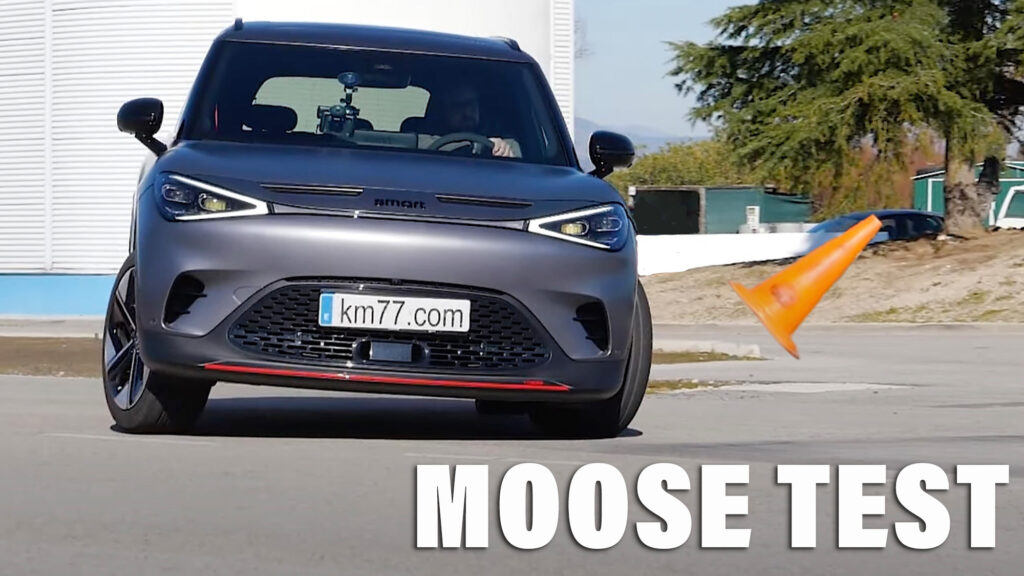The Brabus version of the new Smart #1 is designed to be the exciting model in the electric crossover’s range. But when the moose test experts at KM.77 sent the #1 through the cones the driver and videographer almost had #2 moments.
Though it might look like the kind of cute crossover that pretends to be sporty but is actually only packing a couple of hundred ponies, the #1 Brabus develops a thumping 422 hp (428 PS) and 400 lb-ft (543 Nm) of torque via a dual-motor drivetrain that combines 154 hp (156 PS) of muscle at the front axle with 268 hp (272 PS) at the rear. Zero to 62 mph (100 km) is dispatched in just 3.7 seconds, making it as swift as a Porsche 911 Carrera S.
But power, as the old Pirelli slogan said, is nothing without control, and the Brabus proved to be so wayward due to a combination of body roll, low rolling resistance tires and slow-to-respond ESP that it was outperformed in the tests by many cars that it would leave for dust in a straight line.
Related: Nissan Ariya EV Passes Moose Test With Flying Colors
Attempts to hustle the Brabus through the lane-change test at 48 mph (77 km/h) resulted in lurid oversteer slides that caused the tail to kick out cones, and it wasn’t until the test drivers reduced the speed to just 40 mph (65 km/h) that it was able to complete the course without sending pylons flying. For context, a Tesla Model 3 Long Range blitzed through the course at 52 mph (83 km/h) and a Peugeot e-2008 successfully recorded 48 mph in KM’s hands.
In Smart’s defence, the Brabus did perform far better in the slalom test where it managed to contain its body movements and scored a 22.5-second time, putting it ahead of the Polestar 2 (22.8 seconds) and Audi’s RS3 Sportback (23.1 seconds). But given how it performed in the lane change test we can’t help thinking most drivers would be safer in the standard Smart #1 with its single motor drivetrain and more modest 268 hp (272 PS) and 6.7-second zero to 62 mph time.




